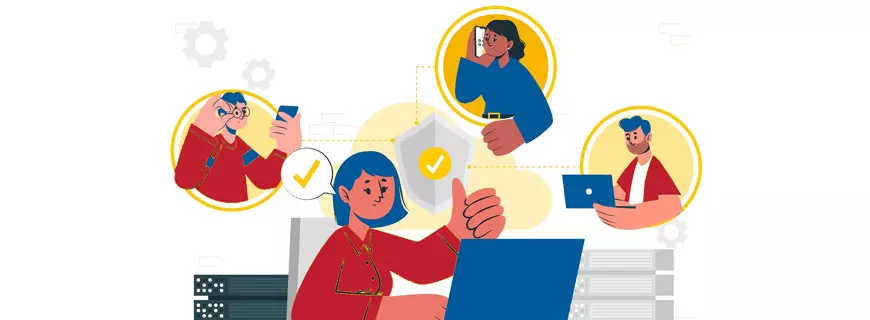
Negotiation Phases Two -Bargaining
My idea of an agreeable person is someone who agrees with me.
– Benjamin Disraeli
Introduction
We have now reached the most critical stage of the negotiation process. When most people talk about negotiation, they are referring to this phase, which is known as bargaining. It is explained in this lesson what to expect when you begin to bargain and what to do if you find yourself at a dead end. It also discusses some common bargaining techniques that experienced negotiators employ in their negotiations.
Negotiation is a method of resolving disagreements between individuals or groups. Not only are different points of view taken into consideration during the negotiation process, but also individual needs, goals, and interests, as well as differences in cultural and racial backgrounds.
This lesson examines the various approaches to negotiation, including the ‘Win-Lose’ approach, also known as bargaining or haggling, and the ‘Win-Win’ approach to negotiation, which is preferable when you want to develop a meaningful and strong interpersonal relationship with another person.
What to Expect When You Arrive
It is possible that, in addition to learning about the pressures, targets, and requirements that might influence your opponents, you will also want to attempt to gain an understanding of their typical negotiating approach.
- Do they usually start out with a ridiculously low offer?
- Are they attempting to rush the negotiation process?
- Do they attempt to frame the issues in a way that benefits them?

Finding out this information can be a time-consuming process of trial and error, but if you have any contacts in the same industry who have previously negotiated with your opponent, you can ask them for an overview of the negotiation process. This is something that any sports fan will be familiar with, in that teams and players will “scout” their opponents in order to exploit any weaknesses they may have and prepare to deal with any strengths that may make their opponent difficult to deal with. If your opponent has a reputation for always trying to rush the negotiation, you may be able to take advantage of this to your benefit. By remaining firm in your bargaining position, you will be able to exert pressure on the other party to complete the transaction on your behalf. It is likely that they will spend less time wringing concessions out of you if they are anxious to get the deal done quickly. As a result, they will either spend longer in negotiations than they would normally wish (which may make them uncomfortable and more susceptible to rash decisions) or make a concession in order to get the arrangement in place as quickly as possible. Identifying and analysing the pressure, targets, and requirements of your adversary should be done as far in advance as possible of your negotiations with them. If they provide information in the preliminary stages of a meeting that you believe will be useful to you, you should take careful note of it so that you can bring it up later in the negotiation at a critical juncture in the conversation. The more information you can gather ahead of time, the better it will be for you. All of this will be useful in negotiation situations.

Techniques to Experiment With
When dealing with a street vendor, some of these techniques are similar to those you might expect to encounter; however, this does not prevent more sophisticated business people from employing them. The most important thing is to recognize them and be prepared to respond to them if they are used against you in a negotiation situation. While it is important to recognize when a technique is being used, you can actually use them to your advantage in a high-pressure negotiation situation.
One thing that many of the techniques have in common is that they are used more in the spirit of hope than they are in the spirit of expectation.
The Exaggerated First Offer technique is typically used in the full knowledge that the offer will not be met, with the hope that the dealer will make an offer that is as high as you can hope for somewhere between the $1000 you are willing to settle for and the $2000 you have requested. Experienced negotiators are aware of this tactic, and they will typically respond with what may be an equally exaggerated counter-offer that significantly undercuts the value of the car being offered. It is not uncommon for the techniques to have little to do with realism, with the goal being to create an atmosphere of urgency and belittlement in order to coerce the customer into accepting a situation that is advantageous to the person employing the technique. The majority of customers, regardless of how accurate the sales pitch was in the first place, will choose to pay $1,500 today rather than $3,000 next week when faced with a choice between those two amounts. Some negotiators will also attempt to flatter you by saying things like “OK, normally I wouldn’t go anywhere near this low, but because I like you, here is what I am going to do.” As long as you maintain a firm line in the face of these techniques, you will remain in command of your situation and retain the upper hand.
Brief check
The negotiation techniques you use can have an enormous impact on the success (or failure) of your negotiation.
Ten Negotiation Techniques to Consider:
- Prepare, prepare, and more preparation.
- Pay close attention to the passage of time.
- Forget about your ego for a while.
- Improve your ability to pay attention.
No one gets anything if they do not ask for it.
- Be prepared for a negotiated settlement.
- Make an offer and be prepared to receive a commitment.
- Do not become a victim of their problems.
- Maintain your commitment to your principles.
- Conclude with a formal confirmation.
How to Get Out of a Catch-22
According to the dictionary, an impasse is a noun that describes “a situation in which no progress is possible, especially as a result of disagreement; a deadlock.” There are a variety of approaches that can be used to break an impasse in negotiations. Here are a few examples:
In cases where a monetary solution is required, alter payment terms to accommodate the situation: a larger deposit, a shorter pay period, etc.
- Replace a team member or the team leader if necessary.
- Agree on the easy issues first, and then move on to the more difficult issues.
- Modify the options that are being considered in the current list.
- Come to an agreement to adjourn for a specified period of time in order to explore alternative options.
An impasse in negotiations runs the risk of turning into a point where any movement on the part of either party is interpreted as weakness. The impasse has the potential to become the overall focal point of the spell of negotiations, when the actual focal point should be, that which is set out in the initial framework that was agreed upon during the preliminary stages of negotiations. Because sticking points are sometimes unavoidable in politics, it is not uncommon for negotiations to drag on for years before reaching a conclusion. In business, it usually doesn’t take that long – but it’s critical to deal with roadblocks as soon as they arise. You must first recognize that an impasse is occurring for a reason and that overcoming it will necessitate changing something about the way you are negotiating in order to avoid becoming trapped. If you can identify the stumbling block, by all means make it the focal point of your change; however, if you are unable to do so, it may be wise to put the problem on the back burner and deal with something else – something manageable that will allow the momentum to be re-established in your negotiations.
Brief check
Recognizing any miscalculations and learning how to avoid them is the key to future success. With negotiations, ignorance is not bliss. You want to understand what you did wrong to avoid blunders.

Approaching Negotiation with a Win-Lose Mind-set
When it comes to negotiation, it’s common to think of it as “getting your own way,” “driving a hard bargain,” or even “beating off the opposition.” While bargaining may well achieve the goals of one party in the short term, it is also a Win-Lose strategy in the long run.
Thus, while one side wins, the other loses, and the consequences of this outcome may be detrimental to the parties’ future relationships in the future, This increases the likelihood of relationships failing, people walking out or refusing to deal with the ‘winners’ again, and the entire process culminating in a bitter dispute.
When it comes to negotiating, win-lose bargaining is probably the most well-known type of negotiation that takes place. Initially, individuals decide what they want, and then each side takes an extreme stance, such as asking the other side for significantly more than they expect to receive in return.
The process of haggling, which involves the offering and accepting of concessions, results in a compromise, with each side hoping that the compromise will be in their favor on the other side.
The following is an example of haggling over the price of a vehicle:
“Can you tell me what you want for it?”
“I couldn’t let it go for less than £2,000,” says the seller.
“I’ll give you a thousand dollars.”
“I’m sure you’re joking.”
“I’ve set a limit of £1,100 as my maximum.”
“£1,900″… “£1,300″… “£1,700″… “£1,500″… “Done!”… “Done!”
Bartering or haggling effectively requires strong assertiveness on the part of both parties involved. While this type of bargaining may be acceptable in the used car market, and in some cultures, it may even be expected, it has disadvantages in the majority of situations. When these disadvantages are applied to social situations, they can have serious ramifications.
Consider the following example of a win-lose negotiation:
It is possible that the negotiation will devolve into a conflict situation, and that this will have a negative impact on any potential long-term relationship.
Is fundamentally dishonest – both sides attempt to conceal their true perspectives and mislead the other.
Comes to an agreement on a compromise solution that may not have been the best possible outcome – there may have been another agreement that was not considered at the time – but was both feasible and would have been more beneficial to both parties.
An agreement is less likely to be reached because each side has publicly committed to a particular position and feels obligated to defend it, even if they recognize that it is an extreme position at the outset of the negotiation.
While there are times when bargaining is an appropriate method of reaching an agreement, such as when purchasing a used car, in general, a more sensitive approach is preferable to a more aggressive approach.
When negotiating about other people’s lives, it is probably best to use an approach that takes into consideration the impact of the outcome on their thoughts, emotions, and subsequent relationships.
The Win-Win Negotiation Strategy
Many professional negotiators like to strive for what is known as a win-win solution while negotiating with clients. Finding solutions that benefit both parties is a key component of this process. As a result, negotiators strive to work together to reach a mutually satisfying solution to their disputes.

When attempting to achieve a win-win conclusion, the following are important considerations:
(1) Separate the people from the problem is a good way to describe how to maintain a relationship.
This means that the disagreement should not be allowed to negatively impact the interpersonal relationship. The problem should not be placed on the shoulders of others, and that the problem should be confronted rather than the people. This may entail actively helping the other individuals while also facing the problem in the first place.
The majority of disagreements and negotiations are not one-time events. It is critical to realize that you may very well have to communicate with the same people again in the future when you are in a state of conflict. As a result, it is always worthwhile to assess whether ‘winning’ the particular problem is more essential than preserving a positive relationship in general.
(2) Concentrate on your interests rather than your political stance.
Contradiction is viewed as a personal assault far too frequently. Individuals interpret rejection of their words and actions as rejection of the individual. This causes many attempts to resolve disagreements to turn into personal conflicts or power struggles, with the parties involved becoming angry, hurt or upset as a result of their involvement.
Brief check
A win-win negotiation is a careful exploration of both your own position, and that of your opposite number, in order to find a mutually acceptable outcome that gives you both as much of what you want as possible. If you both walk away happy with what you've gained from the deal, then that's a win-win!
(3) Produce several possibilities that are beneficial to both sides before making a decision on which to pursue.
Remember that negotiation is about finding a mutually accepted solution to a problem, not using it as an excuse to undermine others. In order to avoid negotiations developing into an argument, it is necessary to intentionally separate the topics under dispute from the persons involved in the negotiation. For example, it is very conceivable to hold individuals in high regard, to like them, to respect their worth, their feelings, their values, and their ideas, while at the same time disagreeing with the specific point they are attempting to make. If you disagree with something someone says, one effective strategy is to continue to demonstrate good appreciation for them even while you disagree with what they are saying.
The following are some examples of statements that a skilled negotiator might make:
I can now understand your point of view because you have articulated it so well. However…”
The fact that you are as worried about this subject as I am shows that you are a true believer. However, from my point of view…”
(4) Maintaining the relationship should be your primary concern.
Avoiding personal conflict by not blaming the other party for causing the problem is another method of avoiding personal confrontation. It is preferable to speak in terms of the impact the problem is having on the individual, the organization, or the circumstance, rather than pointing out any errors or inconsistencies.
“I’m not able to spend a lot of time on this problem, I wonder if there’s any way we might solve it quickly?” could be used instead of “You’re making me waste a lot of time by continuing with this argument.”
The ability to sustain positive relationships in the face of differences over problems (rather than conflicts between people) is dependent on the ability to prevent disagreements between people from becoming “disagreements between persons.”
(5) Concentrate on the underlying interests of the other party.
Instead of focusing on the other side’s stated perspective, think about the underlying interests that they might have in the situation. What are their requirements, desires, and concerns? It is possible that these are not always clear from what they say. When people are bargaining, they frequently appear to be hanging on to one or two points from which they are unwilling to budge.
If an employee complains about not receiving enough help at work, the employer may believe that the employee is receiving as much support as they are capable of providing and more than other employees in the same position. The employee’s underlying interest, on the other hand, might be that he or she would want more friends or someone to talk to on a regular basis. By concentrating on the employee’s interests rather than his or her positions, a solution may be found in which the company connects the employee to a befriending organization in order to meet his or her wants.
The majority of people have an underlying desire to feel good about themselves, and they will vigorously fight any attempt at negotiation that would jeopardize their sense of self-worth. In many cases, their need to maintain their sense of self-worth is more essential than the specific subject on which they differ. The goal will often be to find a way to make both parties feel good about themselves while at the same time maintaining focus on the overall objectives of the project.
Individuals who believe their self-esteem is at risk, or who believe others will think less highly of them as a result of the negotiation, are more likely to become stubborn and refuse to budge from their stated position, or they are more likely to become hostile and offended and withdraw from the discussion.
Identifying and comprehending the emotional needs of people is critical to understanding their overall point of view as well as their underlying interests. While it is vital to understand others’ emotional needs, it is as important to understand your own emotional needs. During a negotiation, it can be beneficial to talk about how everyone involved is feeling.
(6) Another important element to remember is that people should not be coerced to make decisions.
This is a negotiating situation. In the event that both parties believe that the decision is something they contributed to and that their ideas and opinions have been taken into consideration, they will feel much more devoted to it.
It is critical to explain your own requirements, desires, wants, and worries in a clear and concise manner so that others can focus on your interests as well.
Create a plethora of options that benefit both parties in equal measure. As opposed to seeking a single solution to a problem, it is more beneficial to evaluate a variety of possibilities that may be available and then collaborate to choose which is the most appropriate for both parties.
The usage of techniques such as brainstorming could be employed in order to develop a variety of prospective answers. In many ways, negotiation can be viewed as a problem-solving exercise; however, it is critical to concentrate on the underlying interests of all parties involved rather than simply the fundamental differences in perspectives.
The best bargainers will spend their time brainstorming several methods to fulfill the interests of both parties rather than simply meeting their own interests, and then discussing the various options.
(7) Aspirational outcome should be founded on objective criteria.
Once similar interests have been established and worked toward achieving those objectives, it is almost always unavoidable that certain disparities will linger over time. The use of fair, objective, and independent techniques of settling conflicts, rather than turning to a confrontational negotiating approach, which may leave individuals feeling let down or furious, can be beneficial in some situations. It is critical that the following criteria be used as a basis for decision-making:
Both parties find it acceptable.
Independent of both political parties.
It is possible to be perceived as fair.
If no resolution can be reached, it may be possible to identify a third party who is independent of both parties and whom both parties can rely on to render an impartial conclusion.
Other sources of assistance who may be able to aid in circumstances that are unable to be resolved include:
It could be a common friend or colleague.
a member of the committee
A mediator who has received specialized training
However, before seeking assistance from such sources, it is critical to get an agreement on whether this strategy is acceptable to both parties.
Practical Application
Here’s a case study from the consortium of the expert trainers. Their customer who was a multinational corporation’s director of Training & Development (also a career aspirant) kept trying to drive down the per diem pricing of the training during a protracted negotiation for a significant training and development contract.
He cited competition and business policy as justifications. The expert trainers’ consortium had no reason to reduce the per diem even slightly because the contract was large, and they were already running at near capacity. However, they were also selling books to each seminar attendee, which was just as crucial to them as the services. The customer did not request any book discounts. He was just concerned with the per diem, and he was digging in his heels.
The representative of the expert trainers then stopped talking except to ask questions and started listening. She learnt a lot—and discovered a problem that was more essential to the director than the pricing.
The customer who required visibility with his superiors in order to secure the promotion he desired. He was concerned that the expert trainers would form their own ties with his company’s top executives, keeping him in the dark.
The consortium’s representative made the decision to offer him the power he desired. However, she advised him that he could select and recruit the trainers from the consortium himself if he followed their training and direction. The trainers would be paid at their full per diem rate. Without the consortium’s margin, he would save money on the trainers he paid through the consortium. The consortium would still make money from the books and the professional services they offered. The director would remain in command.
It was a solution that paid enough attention to the customer’s underlying purpose. More importantly, the customer’s (Training & Development Director’s) gamesmanship gave way to trust, which affected the rest of the consortium’s negotiations.





